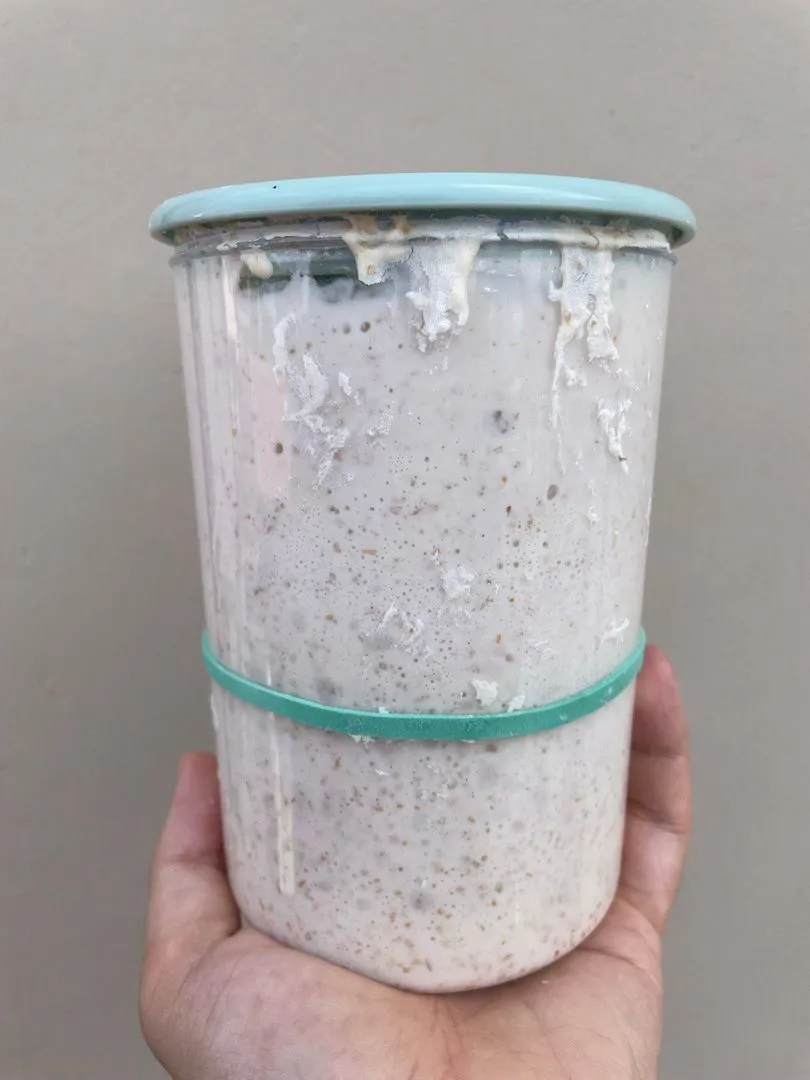How to Make Licoli from Scratch: A Complete Guide to Liquid Sourdough Starter

Anyone who loves kneading knows that sourdough is much more than a simple ingredient: its a living organism, a precious ally that adds flavor, digestibility, and character to every leavened product. If youre new to the world of natural fermentation, licoli — liquid cultured yeast —is the ideal starting point: easy to manage, versatile, and less demanding than solid sourdough.
In this article, Ill walk you through making your own licoli step by step, using simple, readily available tools, such as plastic food jars, which are both practical and lightweight. Alternatively, you can also use classic glass jars, if you prefer.
What is licoli?
Licoli is a live culture composed of equal parts flour and water , populated by yeasts and lactic acid bacteria that, over time, ferment and become the natural engine of leavening. It has a creamy consistency, similar to thick yogurt, and is ideal for bread, pizza, focaccia, brioche, and much more.
What you need to get started
Ingredients:
- 100g of flour (preferably organic, type 1 or 2, or wholemeal to start with)
- 100 g of water at room temperature (non-chlorinated)
- 1 teaspoon of honey or malt (optional, useful only in the first few days)
Equipment:
- A plastic food jar with a lid (preferably not an airtight one)
- A digital scale
- A wooden or plastic spoon for mixing
- An elastic band to mark the initial level
- 💡 Note: You can also use a glass jar, but food-grade plastic is lighter and less fragile, making it ideal for first experiments.
How to make licoli in 7 days
Day 1 – The beginning of fermentation
Combine in a clean jar:
- 100 g of flour
- 100 g of water
- (optional) 1 teaspoon honey
Mix well until smooth. Cover with the lid, leaving it slightly open or pierced, and leave at room temperature (between 22 and 26°C) for 24 hours.
Day 2 – First bubbles
Check the mixture. You may see a few small bubbles or smell a faint fermented odor: this is normal.
Throw away about 2/3 of the mixture (keep only 50 g) and add:
- 50 g of flour
- 50 g of water
Stir, mark the level with the rubber band and let it rest for another 24 hours.
Days 3–6 – Life Awakens
Continue to refresh daily as above:
- 50 g of licoli
- 50 g of flour
- 50 g of water
During these days, your licoli should begin to bubble a lot, increase in volume, and develop a tart but pleasant aroma, similar to that of yogurt or fermented apple.
Day 7 – Is it ready?
Your licoli is ripe when, after a refreshment:
- Doubles in volume in 4–6 hours
- It has visible bubbles on the surface and inside
- It gives off a fresh, lactic smell
If it still doesnt happen, continue the daily refreshments for a few more days.
Refresh the licoli (even after the seventh day)
Once ripe, the licoli must be kept alive with periodic refreshments. Here are the standard doses:
- 50 g of active licoli
- 100 g of flour
- 100 g of water
Stir and let it sit at room temperature until doubled. You can then store it in the refrigerator for 5–7 days. If you bake frequently, you can also keep it out of the refrigerator and refresh it every 24–48 hours.
Summary table
Days/Licoli Table 1 Start of fermentation 100 g flour + 100 g water (+ honey) 2 First refreshment 50 g licoli + 50 g flour + 50 g water 3–6 Daily refreshments Same as above 7 Maturity check It should double in 4–6 hours Practical advice
Temperature : if its cold in the house, you can keep the jar in the oven with the light on or near a warm source (never above 28–30 °C).
Unpleasant odor? If it smells like vinegar, solvent, or eggs, theres probably contamination: start over.
Jars : Plastic is lighter and more shatterproof, ideal if you bake frequently or carry yeast with you. Glass is elegant and easy to sterilize, but must be handled with care.
Conclusion
Making licoli at home is a simple and fascinating act, reconnecting us to the natural rhythms of fermentation and the magic of artisanal breadmaking. Once ready, your liquid yeast will become a faithful companion, capable of giving life to bread, pizza, and leavened desserts with a unique aroma.
Have you tried making licoli yet? Want to share your first baking experiences? Let me know in the comments or tell me about your experience!
gourmetcommunity.it

flavio_campaniolo
Data di inserimento 28 mag 2025
Report article


Comments
There are no comments yet.